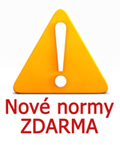Potřebujeme váš souhlas k využití jednotlivých dat, aby se vám mimo jiné mohly ukazovat informace týkající se vašich zájmů. Souhlas udělíte kliknutím na tlačítko „OK“.
ČSN EN ISO 23864 (051178)
Nedestruktivní zkoušení svarů - Ultrazvukové zkoušení - Použití automatizované techniky celkového ostření (TFM) a souvisejících technologií (Norma k přímému použití jako ČSN).
Přeložit název
NORMA vydána dne 1.6.2022
Informace o normě:
Označení normy: ČSN EN ISO 23864
Třídící znak: 051178
Katalogové číslo: 514355
Datum vydání normy: 1.6.2022
Kód zboží: NS-1064191
Počet stran: 48
Přibližná hmotnost: 144 g (0.32 liber)
Země: Česká technická norma
Kategorie: Technické normy ČSN
Kategorie - podobné normy:
Anotace textu normy ČSN EN ISO 23864 (051178):
This document specifies the application of the TFM technique and related technologies for semi- or fully automated ultrasonic testing of fusion- welded joints in metallic materials of minimum thickness 3,2 mm.
NOTE - Unless stated otherwise, in this document ´TFM" and ´TFM technique" refer to the TFM technique as defined in ISO 23243, and to all related technologies, see for example ISO 23865 and ISO 23243.
This document is applicable to components with welds fabricated using metals which have isotropic (constant properties in all directions) and homogeneous conditions. This includes welds in low carbon alloy steels and common aerospace grade aluminium and titanium alloys, provided they are homogeneous and isotropic.
This document applies to full penetration welded joints of simple geometry in plates, pipes and vessels.
This document specifies four testing levels (A, B, C, D), each corresponding to a different probability of detection of imperfections. Guidance on the selection of testing levels is provided. Coarse-grained metals and austenitic welds can be tested when the provisions of this document have been taken into account.
This document gives provisions on the specific capabilities and limitations of the TFM technique for the detection, locating, sizing and characterization of discontinuities in fusion-welded joints. The TFM technique can be used as a stand-alone approach or in combination with other non-destructive testing (NDT) methods for manufacturing, in-service and post-repair tests.
This document includes assessment of indications for acceptance purposes based on either amplitude (equivalent reflector size) and length or height and length.
This document does not include acceptance levels for discontinuities.
The following two typical testing techniques for welded joints are referred to in this document:
- a) side scanning, where the probe(s) is (are) positioned adjacent to the weld cap, typically using wedges. Side scanning can be performed from one side or both sides of the weld;
- b) top scanning where the probe is positioned on top of weld cap with a flexible, conformable delay line or using immersion technique, or using contact technique after removing the weld cap.
Semi-automated testing encompasses a controlled movement of one or more probes along a fixture (guidance strip, ruler, etc.), whereby the probe position is measured with a position sensor. The scan is performed manually.
In addition, fully automated testing includes mechanized propulsion
Náhled normy ČSN EN ISO 23864 (051178)
Odebírejte informace o nově vydaných normách ZDARMA:
Chcete pravidelně odebírat informace o nově vycházejících normách z celého světa a to zcela zdarma?
Přihlašte se k odběru. Vše je velice jednoduché a absolutně ZDARMA.
Na výběr máte vydavatele z celého světa.




 Cookies
Cookies
